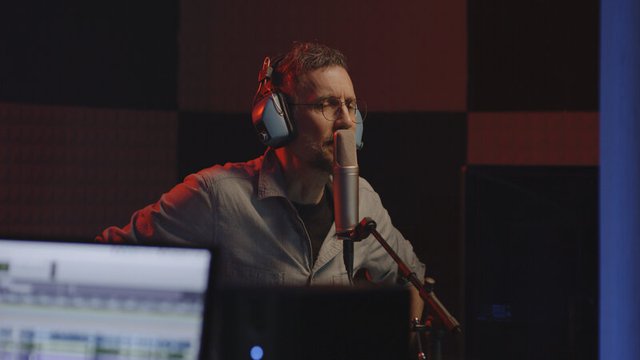

In the dynamic world of film and television, the need for effective communication is paramount. As content creators strive to reach global audiences, the choice between subtitles and dubbing becomes a critical consideration. In this blog post, we will delve into the realms of subtitling and dubbing, exploring their nuances, differences, and the reasons behind their usage.
And if you are interested in a career in the world of translation, subtitling and dubbing, then we’ll explain why the master in Audiovisual Translation is a great option for you.
What is subtitling?
Subtitling is a technique employed to translate spoken dialogue or other audio elements into written text that appears on the screen. Typically located at the bottom, subtitles allow viewers to follow the plot while retaining the original audio in the background. This method preserves the authenticity of the original performance, enabling audiences to experience the cultural nuances and emotions conveyed by the actors.
What is dubbing?
Dubbing, on the other hand, involves replacing the original language's spoken dialogue with a translated version. A new audio track, featuring voice actors who synchronise their speech with the original actors' lip movements, is overlaid onto the existing video. Dubbing aims to create a seamless viewing experience for audiences who may not be familiar with the language of the original content.
Key differences and when to use each
The decision to use subtitles or dubbing depends on various factors, including cultural preferences, target audience demographics, and the artistic vision of the content creators.
Cultural Sensitivity
Subtitling is often favoured when the goal is to preserve the authenticity of the original content, especially in films with strong cultural contexts.
Dubbing may be preferred in markets where audiences are accustomed to consuming foreign content with synchronised audio to enhance immersion.
Accessibility
Subtitling is considered more accessible as it allows viewers to hear the original dialogue while reading the translation. This is particularly beneficial for language learners or those with hearing impairments.
Dubbing can enhance accessibility for viewers who may struggle to read subtitles quickly or who prefer a more immersive experience.
Artistic Integrity
Subtitling is the choice when content creators wish to retain the original vocal performances, allowing audiences to connect with the emotional nuances of the actors.
Dubbing may be selected to adapt performances to suit the cultural expectations of the target audience, ensuring a more seamless and relatable experience.
Is one better than the other?
The debate over whether subtitles are superior to dubbing, or vice versa, is subjective and largely depends on individual preferences. While subtitles maintain the integrity of the original performance, dubbing offers a more immersive experience for those who prefer not to read while watching. Ultimately, the effectiveness of each method lies in the context of the content and the expectations of the target audience.
Why studying a master in Audiovisual Translation is a good option
For those passionate about the intricate world of audiovisual translation, pursuing a master's degree in the field can open doors to a rewarding career. The master offered at Universidad Europea in Valencia is a specialised 10-month programme that equips students with the skills to navigate the challenges of subtitling and dubbing, including linguistic nuances, cultural sensitivities, and technical proficiency.
Over the course of the master, which consists of 60 ECTS, students will take part in work placements at leading companies in the field, gaining the real-world skills needed to succeed and building up an important network of contacts. In addition, our state-of-the-art campus offers facilities such as simultaneous interpretation booths, where you can hone your skills. And finally, a career as a translator is normally very international, so we include a trip to London to visit one of the top audiovisual production studios as part of the programme.
In conclusion, the choice between subtitles and dubbing is a multifaceted decision that revolves around cultural, artistic, and accessibility considerations. Both methods play a crucial role in making content accessible to global audiences, and the ongoing debate underscores the importance of maintaining a balance between authenticity and adaptation. Aspiring professionals in this field can embark on a fulfilling journey by honing their skills through a master's programme, becoming key players in the ever-evolving world of audiovisual translation.